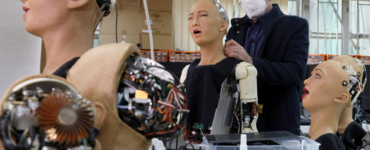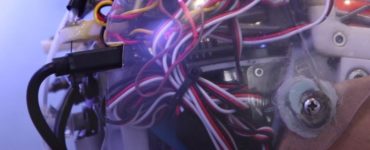The new breed of social robots designed to interact with humans and other robots demands that these machines be highly effective communicators. Research has shown that as much as 55% of human-to-human communication is nonverbal, so it is essential for social robots to be able to recognize and respond appropriately with their own facial expressions and hand/arm movements. In fact, social robots including companion robots or customer service robots use facial expressions to help improve the mood of humans, and create a more warm and friendly customer experience.
Sophia the Robot, our latest and most advanced robot in the Hanson family of robots, is well known for both her human-like skin and her ability to make dozens of different facial expressions. The unique combination of these two factors allows Sophia to uniquely connect with humans, as evidenced in her many high profile global media appearances.
Sophia’s skin is made from a patented material invented by Hanson Robotics called Frubber®. It is a kind of elastic rubber, or elastomer, that mimics the feel and flexibility of human skin. Frubber® was developed by our scientists at Hanson Robotics.
Our software and hardware development teams are constantly working to perfect and simplify the casting procedure. To inform their new designs, they carefully observe Sophia’s face after she has been out in the world, noting which parts have accumulated the most wear and tear. They also inform their new designs based on the analysis of Sophia’s face using three-dimensional computer models.
At Hanson Robotics, we are working to push the boundaries of robot-human interaction by constantly experimenting and improving the human-like properties of Sophia’s skin and face design.
Watch our video to learn more:
The Hanson Robotics Team
Image and Photo Credits: Hanson Robotics Limited






Recent Comments